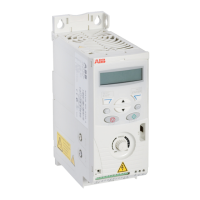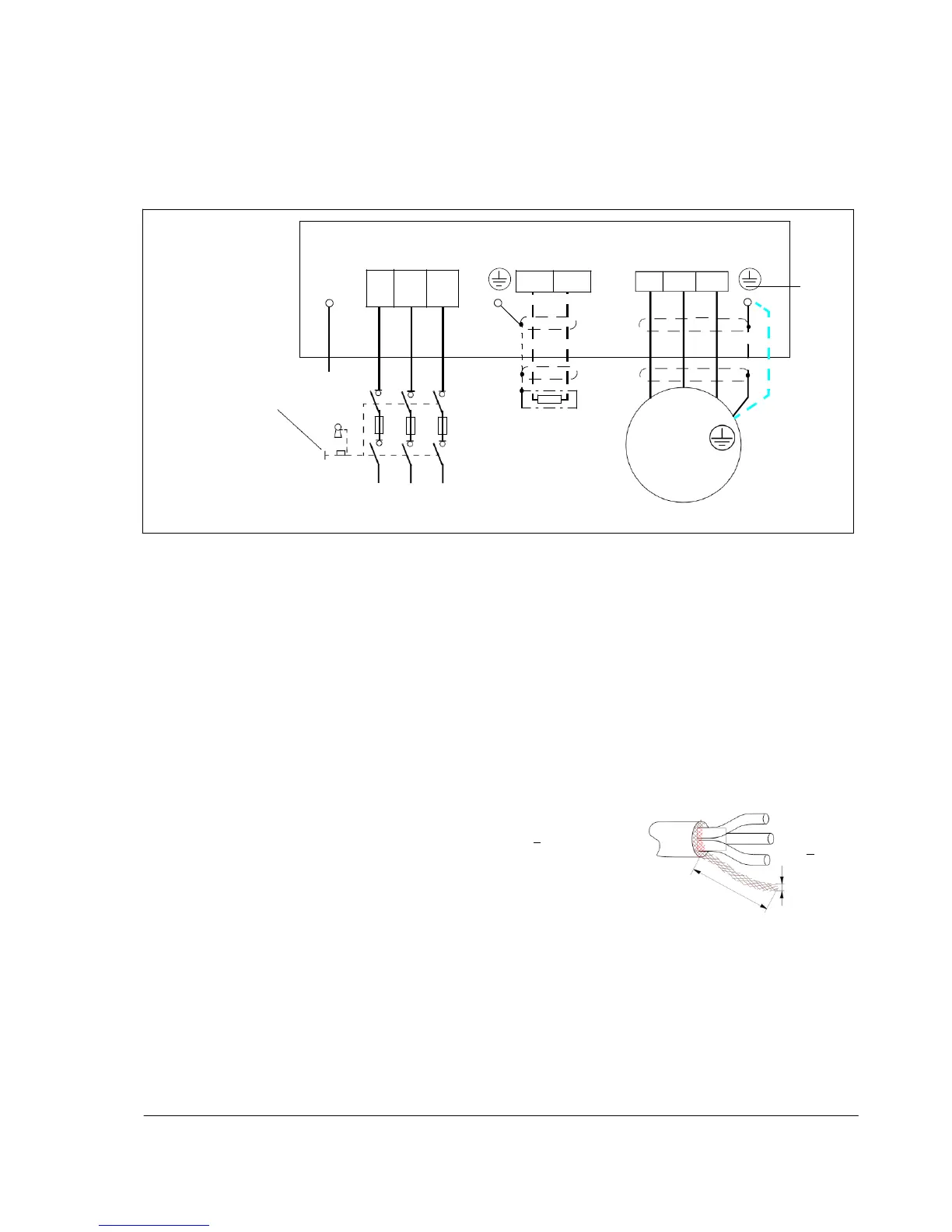Connecting the power cables
Connection diagram
Drive
INPUT
3)
OUTPUT
PE
U1 V1 W1
1)
(L) (N)
BRK- BRK+
U2 V2 W2
2)
PE
For alternatives, see
section Selecting the
supply disconnecting
device (disconnecting
means) on page 29
.
Optional brake
resistor
V1
U1 W1
3 ~
Mo
to
r
L1 L2 L3
3)
(L)
(N)
1)
Ground the other end of the PE conductor at the distribution board.
2)
Use a separate grounding cable if the conductivity of the cable shield is insufficient (smaller than the conductivity of the
phase conductor) and there is no symmetrically constructed grounding conductor in the cable (see section Selecting the
power cables on page 30).
3)
L and N are connection markings for 1-phase supply.
Note:
Do not use an asymmetrically constructed motor cable.
If there is a symmetrically constructed grounding conductor in the motor cable in addition to the conductive shield, connect
the grounding conductor to the grounding terminal at the drive and motor ends.
For the 1-phase power supply, connect power to U1 (L) and V1 (N) terminals.
Route the motor cable, input power cable and control cables separately. For more information, see section Routing the
cables on page 34.
Grounding of the motor cable shield at the motor end
For minimum radio frequency interference:
• ground the cable by twisting the shield as follows: flattened width > 1/5 · length
• or ground the cable shield 360 degrees at the lead-through of the motor terminal
box.
b > 1/5 · a
a
b

